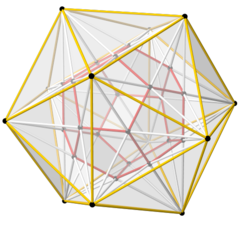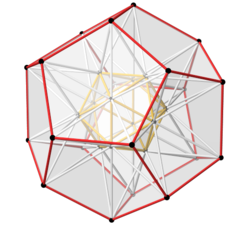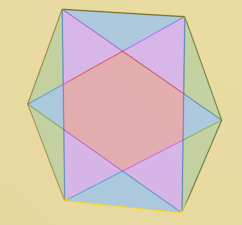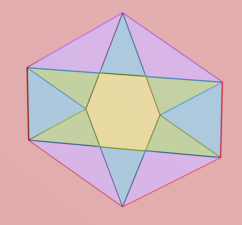Category:Stellated dodecahedron cells (red, magenta, blue, green, yellow)
This image set shows two topologically equivalent arrangements of polyhedral cells that are related to the small and great stellated dodecahedron.
The basis of these arrangements is the definition of the two star figures as augmentations, i.e. as Platonic cores with pyramids added to their faces. In this set these are magenta pyramids added to the red dodecahedron, and green pyramids added to the yellow icosahedron. This process is then continued by adding blue tetrahedral cells as a next layer, which gives the shape of the great dodecahedron in the former, and the excavated dodecahedron in the latter case. The last layer closes the gap to the hull.
The stellated dodecahedra can be seen as non-convex variants of the pentakis dodecahedron and the triakis icosahedron.
| stellated dodecahedra as augmentations | ||||
|---|---|---|---|---|
| core | pyramids | hull | ||
| small | 
|

|

| |
| great | 
|

|

| |
Adding the edges of the Platonic hulls to their skeletons gives two skeletons that are topologically equivalent.
4-polytope[edit]
This image set treats these skeletons like 3-dimensional projections of the same 4-polytope. This means that the cell corresponding to the Platonic hull is everywhere around the figure. Lighter colors indicate the inside of a cell, which in case of the hull is projected on the outside.
This 4-polytope has
- 32 vertices,
- 120 edges,
- 152 faces (12 pentagons, 140 triangles)
- and 64 cells (1 dodecahedron, 12 pentagonal pyramids, 50 tetrahedra, 1 icosahedron).
Like all 4-polytopes it has the Euler characteristic 32 - 120 + 152 - 64 = 0.
POV-Ray source[edit]
These images have been raytraced with POV-Ray. The cells are created with constructive solid geometry.
The source code can be found here: https://github.com/watchduck/stellated_dodecahedron_cells
Question[edit]
There is a question about this topic on the Kepler-Poinsot polyhedron talk page in Wikipedia. It would be interesting to know if this relationship has already been described. And possibly someone knows the correct terms for Foo and Bar in the following statements:
The Foo skeletons of the small and great stellated dodecahedron are topologically equivalent and Bar inversions of each other.
The Foo skeleton of the pentagram ![]() is topoligically equivalent to the pentagonal antiprism. It is the Bar inversion of itself.
is topoligically equivalent to the pentagonal antiprism. It is the Bar inversion of itself.
Images[edit]
Small and great[edit]
| open cells (stacked) | ||||
|---|---|---|---|---|

|

|

|

|

|

|

|

|
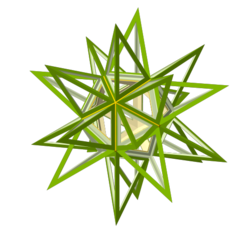
|

|
| solid cells (stacked) | ||||
|---|---|---|---|---|

|

|

|

|

|
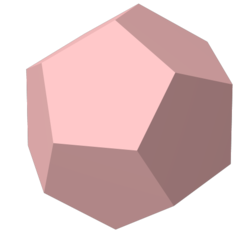
|
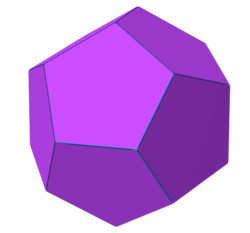
|

|

|

|
| solid cells (by level) | ||||
|---|---|---|---|---|

|

|

|

|

|

|
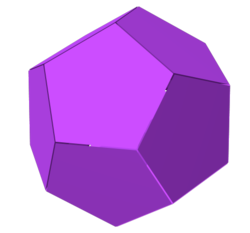
|
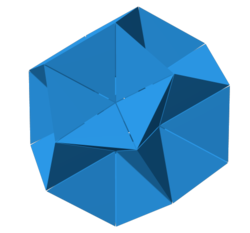
|

|

|
Cuts through small figure[edit]
| 5-fold | ||
|---|---|---|

|

|

|
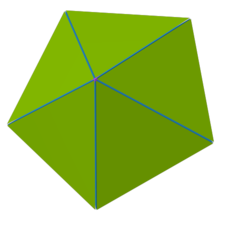
|
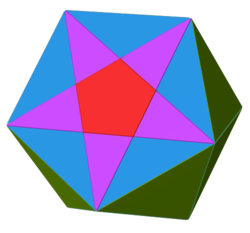
|

|
| vertical | ||
|---|---|---|

|

|

|

|

|
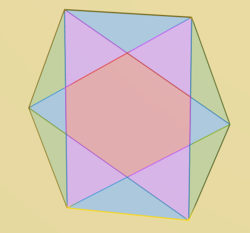
|
Cuts through great figure[edit]
| 3-fold | ||
|---|---|---|
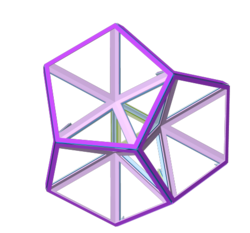
|

|
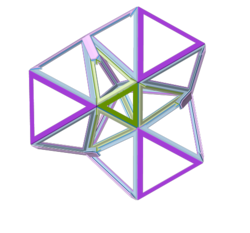
|
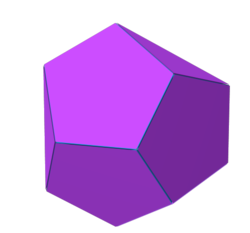
|

|

|
| 5-fold | ||
|---|---|---|
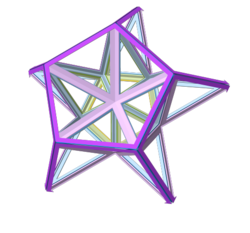
|

|
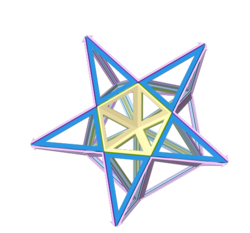
|

|

|
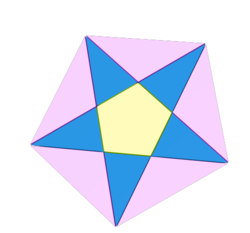
|
| vertical | ||
|---|---|---|

|

|

|

|

|
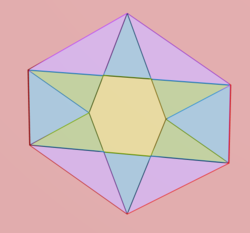
|
Stellations of the docecahedron[edit]
| 0 | 1 | 2 | 3 |
|---|---|---|---|

|

|

|

|
A similar approach is described in Polyhedra by Peter R. Cromwell (p. 265f) to construct the stellations of the docecahedron:
- The first stellation of the dodecahedron is built from a layer of 12 pyramids.
- The second stellation of the dodecahedron is built from a layer of 30 wedges.
- The third stellation of the dodecahedron is built from a layer of 20 spikes.
(This construction leaves empty space between the blue wedges and the green spikes. The text describes that the 20 spikes "fit into the hollows between the wedges", but the images in the book are like those on the right.)
Subcategories
This category has the following 7 subcategories, out of 7 total.
G
- Great stellated dodecahedron cells (rmbgy) (1 P, 30 F)
S
- Small stellated dodecahedron cells (rmbgy) (1 P, 24 F)
Pages in category "Stellated dodecahedron cells (red, magenta, blue, green, yellow)"
This category contains only the following page.
